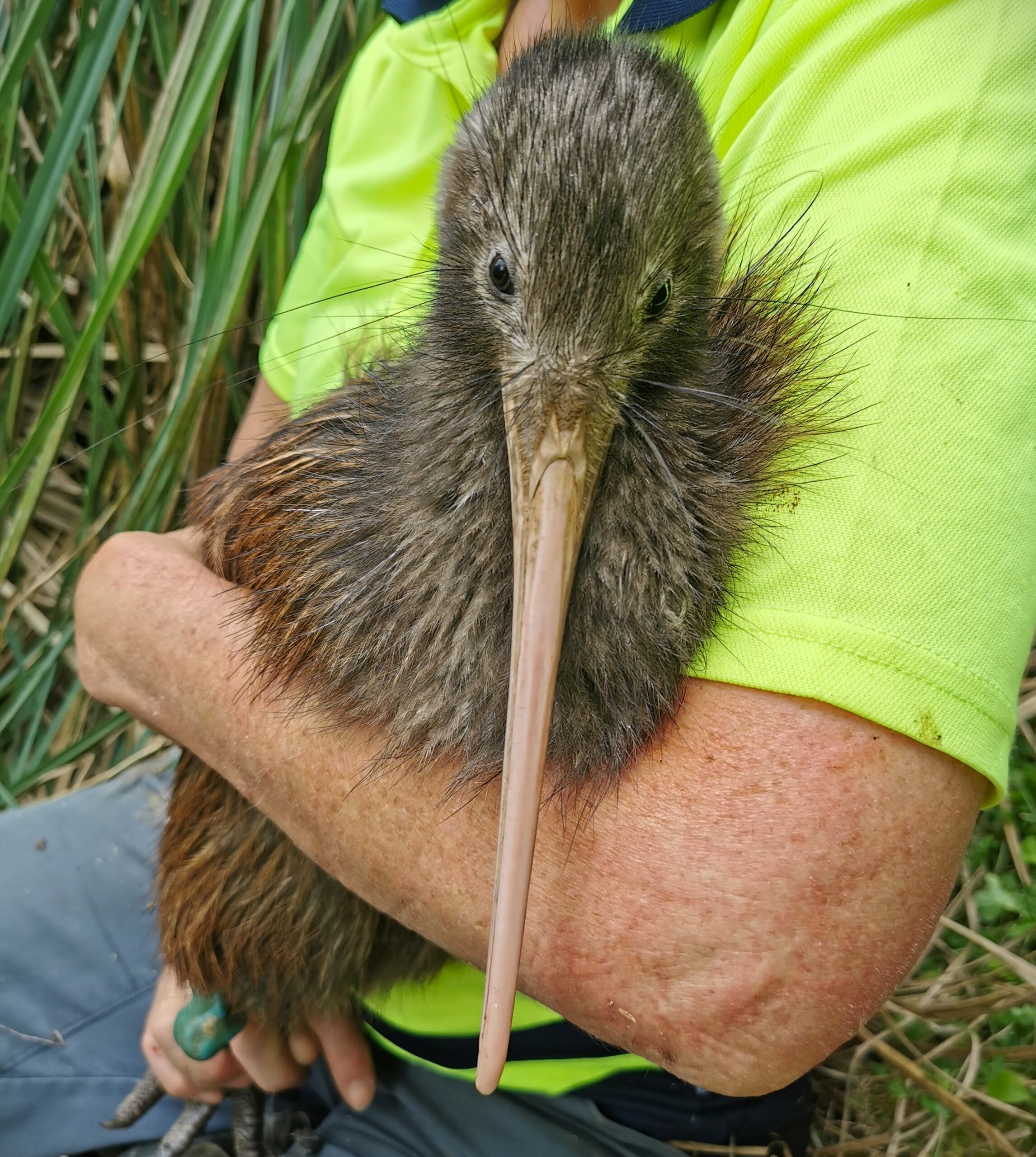Two more kiwi have been tracked moving successfully over 10km in eastern Whangarei prompting the question – is this a kiwi corridor or a kiwi highway?!
A couple of months ago Fetu Mama the kiwi was tracked moving over 10km from her release site at Parua Bay to the Maungatika Scenic Reserve at the very top of Mt Tiger. Acoustic monitors were quickly deployed and picked up the call of a local male kiwi suggesting she was on the move to track down a mate. This was a great sign that the kiwi corridor was starting to work.
However it seems she is not the only kiwi making use of the eastern Whangarei 15,000ha predator controlled network and moving over 10km in a short time frame to find other local kiwi hotspots.
Much to the delight of Kiwi Coast’s kiwi monitor, Todd Hamilton, two other kiwi have now made similar journeys.
Todd said “While I was up at Mt Tiger listening in to Fetu Mama’s transmitter signal, I thought I may as well check for two other kiwi whose signal had not been picked up for a couple of weeks. This was “Fish” the kiwi who survived being hit by a car at Whangarei Heads, and Te Motu Manu Hine (aka “Hine”). There was no sign of Fish, but I was delighted to hear Hine’s signal booming in loud and clear from the NRC pine forest block on Mt Tiger not too far from Fetu Mama.”
Te Motu Manu Hine was released six months ago at Parua Bay after graduating from the Matakohe Limestone Island kiwi creche. She is a three year old female Northland brown kiwi, and still growing fast. Since she is on the move and still growing we caught up with her to give her a health check and change the band on her transmitter. Like a lot of wild Whangarei kiwi, she seems to prefer pampas, gorse and cutover pine to the lush native forest nearby, making tracking her less than pleasant!”
Fish’s transmitter signal however has been picked up in a completely different direction – out near the Horahora estuary on the coast near Pataua North.
Fish the kiwi Photo: Carl Dowd
Pataua North Landcare’s Carl Dowd picked up Fish’s signal while carrying out kiwi research investigating kiwi breeding and chick survival.
Carl said “Todd asked me to listen out for Fish while I was monitoring other kiwi, and to my surprise he had moved from Parua Bay to the Horahora estuary. He is still on the move, and was last tracked to the Whanui pine plantation (managed by Manulife Forestry). It is fantastic how these kiwi are safely moving through the landscape thanks to community driven stoat and dog control. ”
As these three kiwi are some of the very few transmitter wearing kiwi in Northland, they indicate what other wild kiwi in eastern Whangarei may be doing – dispersing large distances safely to find themselves mates and explore new territories.
Kiwi Coast is working with community-led projects in eastern Whangarei to create a “kiwi corridor” to link up the kiwi strongholds of Whangarei Heads and Tutukaka. Known as “Kiwi Link” the project brings together 12 community groups over 15,000ha between Parua Bay and Ngunguru Ford. Together the projects have created a collaborative landscape scale network of sustained pest control and dedicated dog ownership.
The ultimate aim is to reconnect isolated kiwi populations and restore the regional gene flow of Northland brown kiwi. This will help to ensure kiwi can thrive into the future instead of becoming genetically “bottle-necked” at the same location.
Kiwi Coast Coordinator Ngaire Sullivan thanked all the dog owners, landowners and pest controllers working hard to restore the native forests and help keep native wildlife like kiwi safe: “These three kiwi prove that all the hard work is paying off – it is working!”




